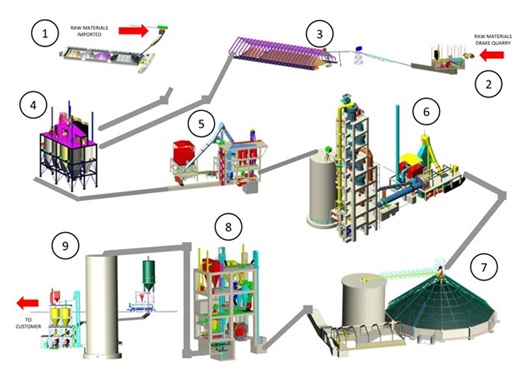NEWS RELEASE January 2019
Preparing for the Cement Conference in St. Louis
The 61st Annual IEEE-IAS/PCA Cement Industry Technical Conference will be held in the St, Louis Convention Center, April 28-May 2, 2019. This is the largest conference in the cement industry and will include presentations of the latest technology covering a variety of topics important to the industry. There will also be Tutorials, Professional Training sessions, a state of the industry report and much more. There will be 150 exhibitors
McIlvaine has interviewed exhibitors in the past and posted this coverage plus other cement industry analyses and articles in a free site. These articles and interviews can be viewed at
http://www.mcilvainecompany.com/Decision_Tree/subscriber/Tree/UnivDB/appl3.asp?ref1=806&ref2=0&ref3=0&ref4=0&ref5=0&ref6=0
McIlvaine will be providing extensive pre conference coverage similar to that of WEFTEC in 2018 as shown at Municipal Wastewater Services and North American Frac Sands 2019 http://www.mcilvainecompany.com/Decision_Tree/McIlvaine%20Insights%20Issue%2089%20Jan%2011%202019%20Frac%20Sand%20Plant%20Alert.htm
There are lots of Combust, Flow, and Treat (CFT) products and services utilized in cement plants. Industrial Accessories Company. ( IAC-Intl), who will be one the conference exhibitors supplied a turnkey system for the Drake Cement plant in Arizona.

- Imported ingredients: Alumina and iron are imported as minor processing additions.
- Mining and crushing: Limestone (calcium) and silica are mined from the quarry and conveyed to the plant.
- Raw material storage: Limestone (calcium), iron, silica and alumina are stored in large silos.
- Blending: All raw ingredients are blended in proportion to prepare for grinding.
- Raw grinding: Raw ingredients are ground to fineness of baby powder and further blended into a homogeneous mixture.
- Heating and cooling: The ground mixture is fed into the kiln through a tall preheating tower, where it is heated and rapidly cooled to create clinker.
- Clinker storage: Clinker is stored in a large dome and silo waiting to be ground into cement.
- Finish grinding: Clinker is ground into the fine gray powder recognized as cement, adding a small amount of gypsum to control the time of setting.
- Cement storage and shipping: Finished cement is stored in a silo awaiting loading into trucks or rail cars.
IAC-Intl provided Design/Build services. The plant site sits on 300 acres in Drake, AZ. The facility includes complete raw materials receiving and storage, clinker production, rail loading and storage silos, coal fuel processing, and fugitive dust collection. The Design/Build contract was valued at $49.7 million. As part of the project, IAC supplied over 1,500 metric tons of structural steel, 34 different specially designed IAC OEM baghouses, energy saving IAC OEM air-to-air heater exchanger, conveyors, rotary valves, fans, and process control dampers for emission control at the plant.
The McIlvaine company tracks all the cement plant activity in N032 Industrial Plants and Projects
For more information contact Bob McIlvaine at This email address is being protected from spambots. You need JavaScript enabled to view it. 847 784 0012 ext. 122



